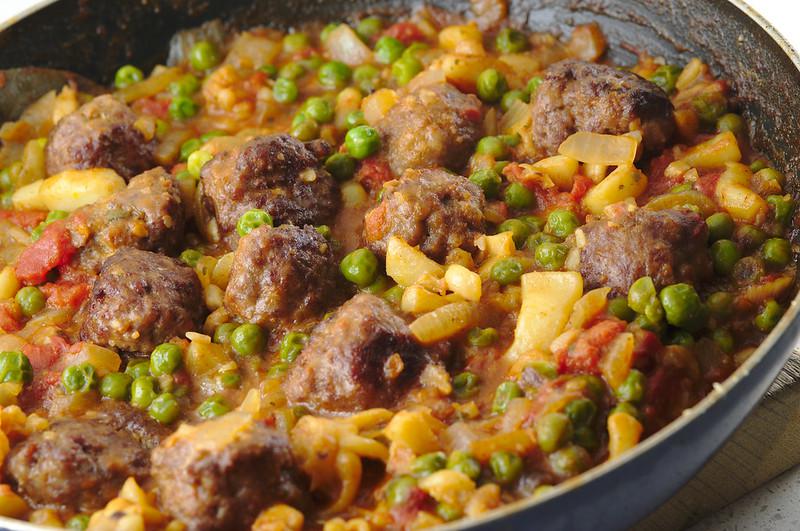Traditional Catalan food: varied, healthy, and delicious
Geography, history, and making the most of leftovers has shaped the flavor of Catalonia over centuries

Catalonia is known around the world for its superstar chefs with their Michelin stars and molecular gastronomy.
But its not all about glamorous fine-dining. Hearty traditional food your grandmother used to cook (if she were Catalan…) also takes pride of place on dinner tables around the country.
For the uninitiated, perhaps it's best to start with which foods are not Catalan. Tourists often come here and order paella, gazpacho, and sangría in restaurants possibly without realising that they all originated elsewhere. Paella is the signature dish of the Valencian region, gazpacho is Andalusian in origin, while sangría is from the south of Spain or perhaps Portugal.
Other dishes commonly mistaken for Catalan include 'fideuà,' a sort of paella made with noodles instead of rice, 'truita de patates' otherwise known as 'tortilla de patatas' is also from elsewhere in Spain, while 'patates braves' are said to have been first eaten in Madrid, before being shared around the peninsula and given local twists.
Today, 'patates braves' could be considered traditionally Catalan despite the fact that the dish did not originate here – it has still spent many decades being served and eaten in Catalonia. Indeed, on menus in Madrid, you'll most commonly find both 'patatas bravas' with red sauce as well as 'patatas alioli' which is served with a white garlic sauce, but in Catalonia 'braves' are most commonly served with both sauces.
Joe Woodward teaches English through gastronomy at Delicious English, and, after decades of living in Catalonia, has gotten to know the traditional cuisine very well. He explains to Catalan News that the geographical positioning of the territory, with mountains to the north and the Mediterranean Sea to the east, has given it many of its signature flavours.
"You have the whole 'mar i muntanya' thing, the sea and the land, you have a huge variation" that helps distinguish Catalan food, according to Woodward.
Traditional Catalan dishes
Go to any restaurant with friends in Catalonia and likely the first thing ordered for the table is the humble 'pa amb tomàquet,' undoubtedly one of the most famous starters beloved by all. The dish is simply toasted bread with tomatoes scraped on it, sometimes garlic as well, and topped with oil and salt.
Traditional veggie options include 'escalivada', a dish prepared with grilled aubergine, pepper, and onion; plus 'espinacs a la catalana,' cooked spinach with pine nuts and sometimes raisins.
Of course, many of the most popular main dishes are meat-based. There are various types of sausage, such as 'botifarra' a more regular style that is often served with 'mongetes,' white beans, as well as 'fuet,' which is a type of cured sausage.
Every culture in the world has developed its own types of stews, and in Catalan, that style of dish is known as 'estofat.' An even more developed type of stew, with just veal and mushrooms served with the gravy is known as 'fricandó.'
'Mar i muntanya' – literally "sea and mountain" – is also another common form of meal, consisting of a pairing of seafood and red meat, for example, a rice dish combining prawns or mussels with rabbit or sausage.
Another interesting combination found in traditional Catalan dishes is meatballs with cuttlefish, known locally as 'mandonguilles amb sèpia.'
And of course, after all that, no great meal is complete without crema catalana for dessert – a bit like a Catalan crème brulée.
Joe Woodward believes that historical reasons have also added to the culinary tradition of Catalonia, with the Romans and Greeks having settled here in the past and bringing their knowledge here.
Additionally, he thinks the historic need to use up all available foods have helped paint the picture of traditional Catalan food. 'Canelons' are always eaten on St Stephens' Day: pasta tubes stuffed with leftovers from Christmas dinner, while pigs' feet (peus de porc) and even snails (cargols) could also fit viewed in this context.
If snails is your thing, then you'll have to check out the annual snail eating festival which takes place in the western region of Lleida every year in late May/early June – l'Aplec del Caragol.
The Institute of Catalan Cuisine is a great resource for checking recipes and variations of Catalan dishes.
Seasonal foods
The seasons also play a major role in Catalan food, as there are certain dishes that are only eaten at certain times of the year.
Between January and March, long tender onions known as 'calçots' are barbecued and worshipped.
At Easter, people enjoy a very special cake known as 'Monas de Pasqua'. For Kings' Day, January 6, another type of cake is enjoyed with candied fruits – 'Torta de Reis.'
In June, instead of regular 'coques' – which are types of Catalan flatbreads not too dissimilar to focaccia – people enjoy a sweet variation for the celebration of Sant Joan on June 24.
After the summer, it's mushroom season, with dozens of varieties growing wildly in the Catalan mountains in September and October.
By All Saints Day, people enjoy 'panellets', small round cakes of marzipan and pine nuts, while small huts pop up on the sides of streets selling sweet potatoes and roasted chestnuts.
Christmas dinner begins with an appetiser of 'sopa de galets' – stuffed pasta shells served in chicken soup.


